Most of our lot is made up of woods or lake, but there is a small area up near the road that I try to maintain as a meadow. Periodic mowing with a brush-hog accomplishes this. Otherwise the field would be quickly overgrown by juniper and sweet gum trees.
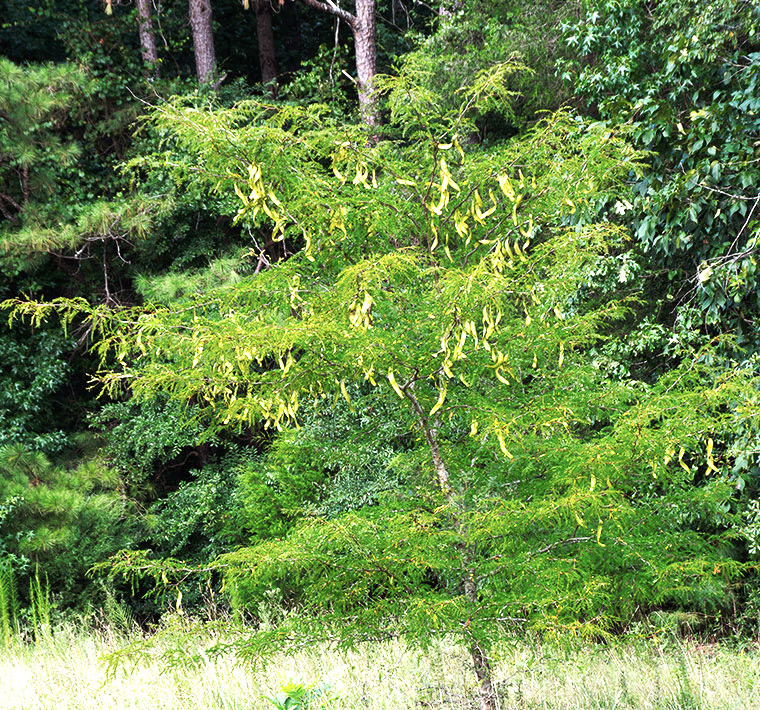
There is one tree that I allow to grow, however. I like it because it reminds me of Acacia trees I have seen in Africa and tropical America. This is a Honey Locust (Gleditsia traakos)
In this late summer view, the seed pods are nearly mature. Production of pods like these is a good clue that this species is a member of the legume family (Fabaceae).
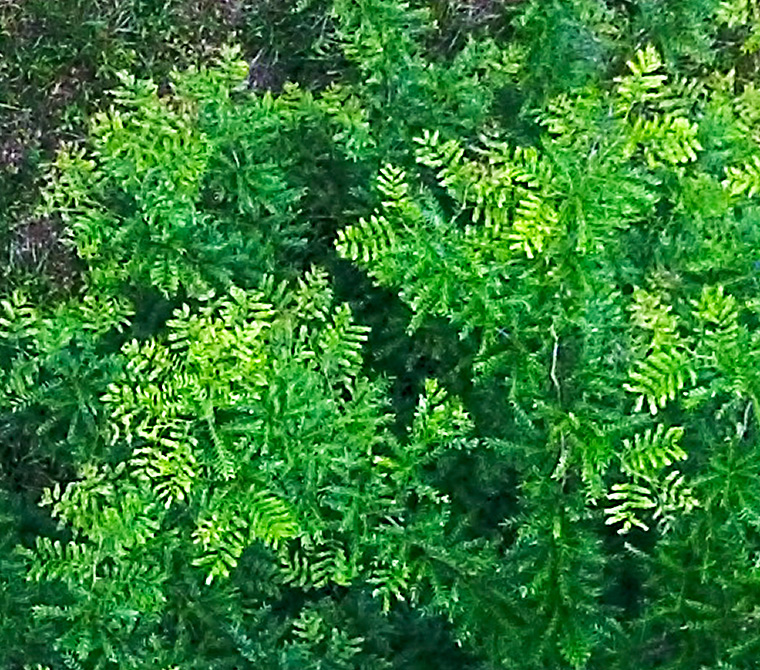
A drones-eye view shows the wonderful compound leaves, both pinnate and bipinnate.
Honey Locust is a curious name for these trees. What is a locust anyway? Isn’t that some sort of grasshopper on steroids that comes and eats all of one’s crops? Supposedly some of Honey Locust’s European relatives have small seed pods that reminded someone of a locust, hence the name. The Honey part comes from the fact that the tissue surrounding the seeds in Honey Locust is sweet to the taste. This leads small mammals to chew on the seed pods after the pods fall to the ground.
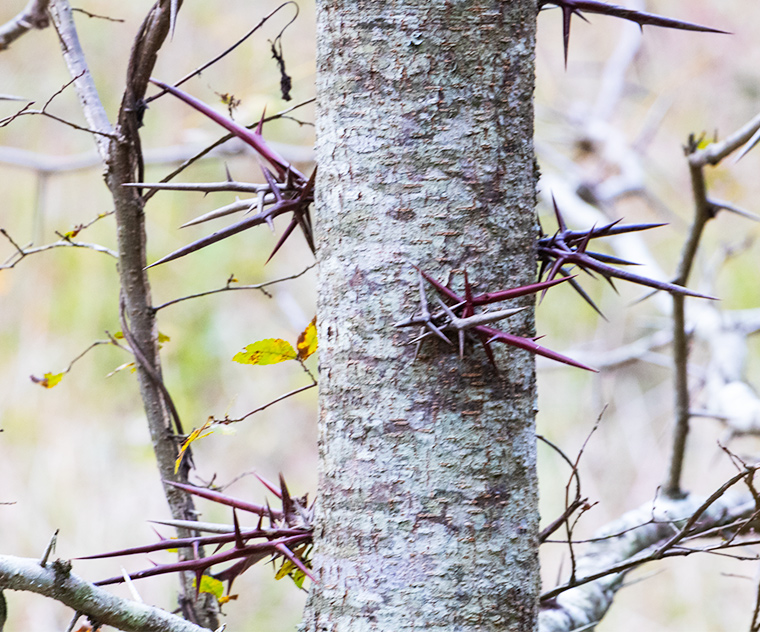
The trunk of Honey Locust trees is heavily armed with complex thorns. However, many plant breeders have selected seedless varieties for planting in a home garden.

Thorns on the branches are less complex, but still formidable. Plants are generally assumed to have thorns to deter herbivore, but what herbivores are being deterred by the thorns of Honey Locust? Our largest herbivore is the White-Tailed Deer (Odocoileus virginianus). Deer could easily eat the foliage of Honey Locust. The thorns are too far apart to deter deer. According to one author, the thorns of Honey Locust are evolutionary baggage. Back a few thousand years, there were herbivores much larger than deer, and they might have been deterred from eating Honey Locust by the thorns. There has not been enough evolutionary time for the Honey Locust thorns to disappear.
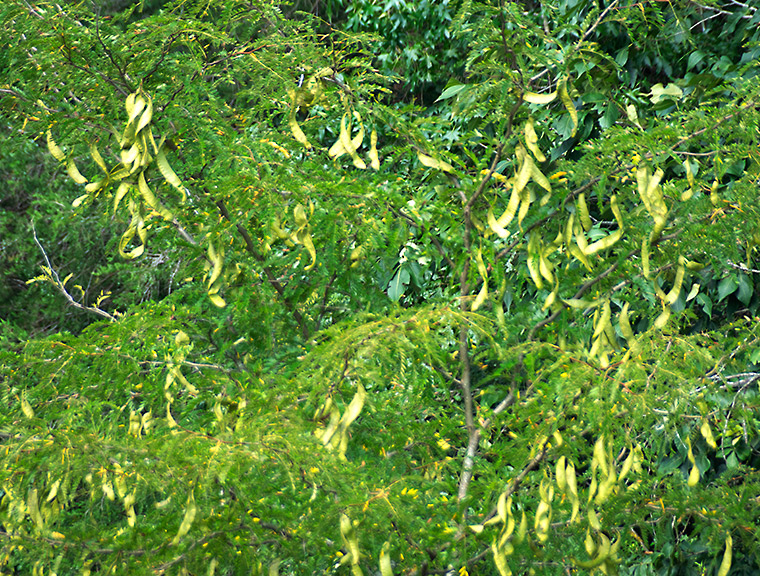
The seed pods are plentiful and large on Honey Locust. One would think that a Honey Locust in flower would be quite a sight.
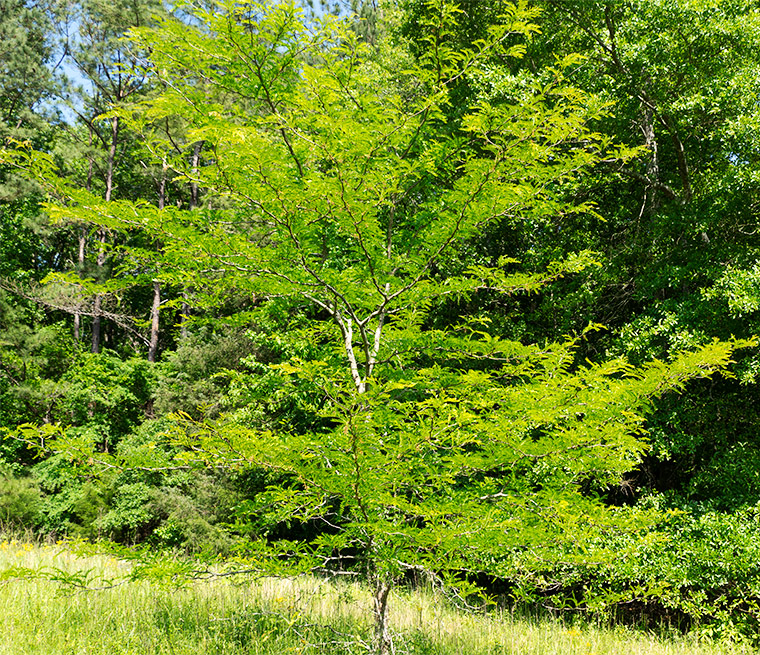
Here is a tree in full bloom. Aren’t the flowers magnificent? What do you mean you can’t see any flowers? I will zoom in a bit to help you.
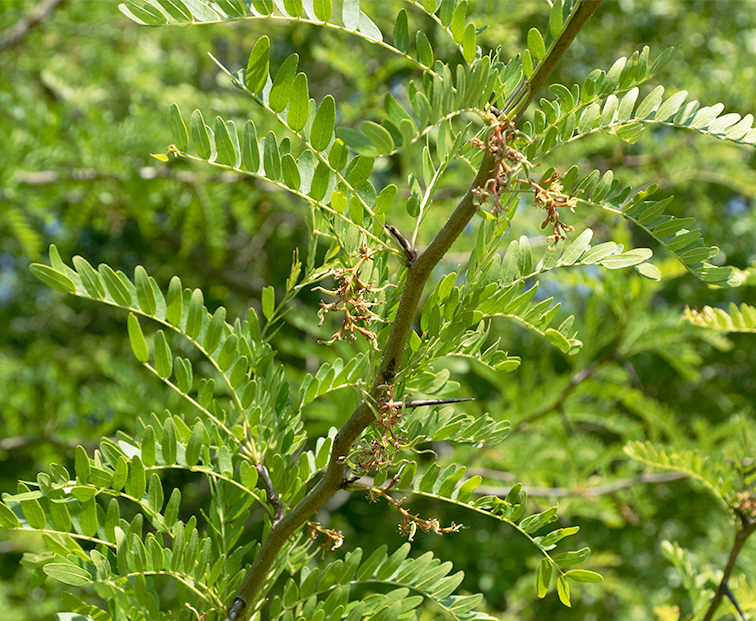
You still can’t see the flowers? I will add a few arrows to help you locate them.
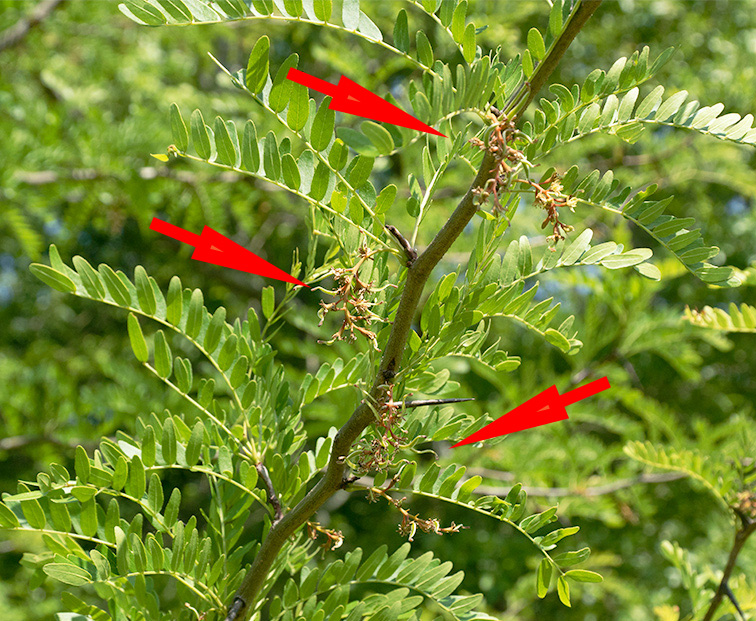
Yes, the flowers are those brown tangles spaced along the branches.
A closeup will show more.
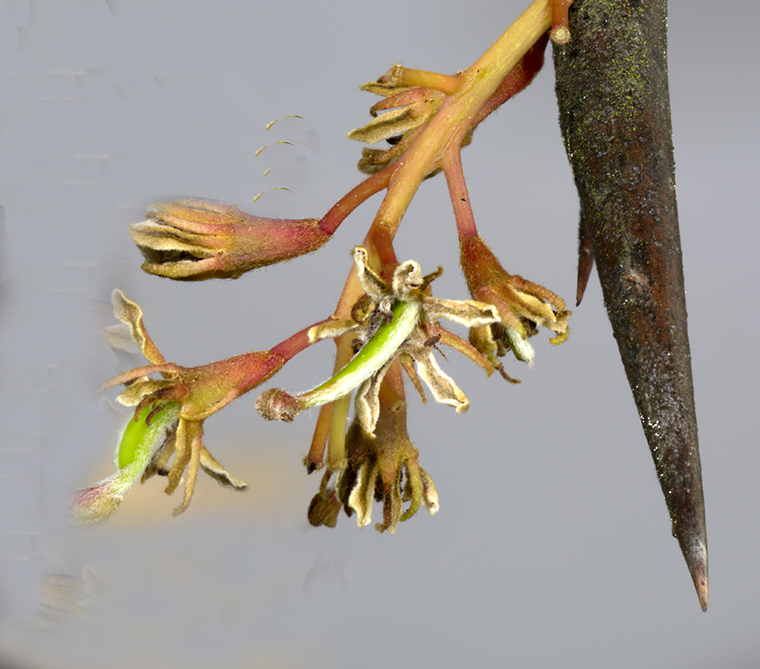
So the flowers are in inconspicuous, dull brown clusters. Two of these flowers have already started to grow out the seed pods.
So Honey Locust has many features to recommend it, and its similarity to African Acacia trees is quite striking. If we only had a couple of giraffes to nibble at the foliage….
Discover more from A Naturalist's Journal
Subscribe to get the latest posts to your email.

Thanks Gary!